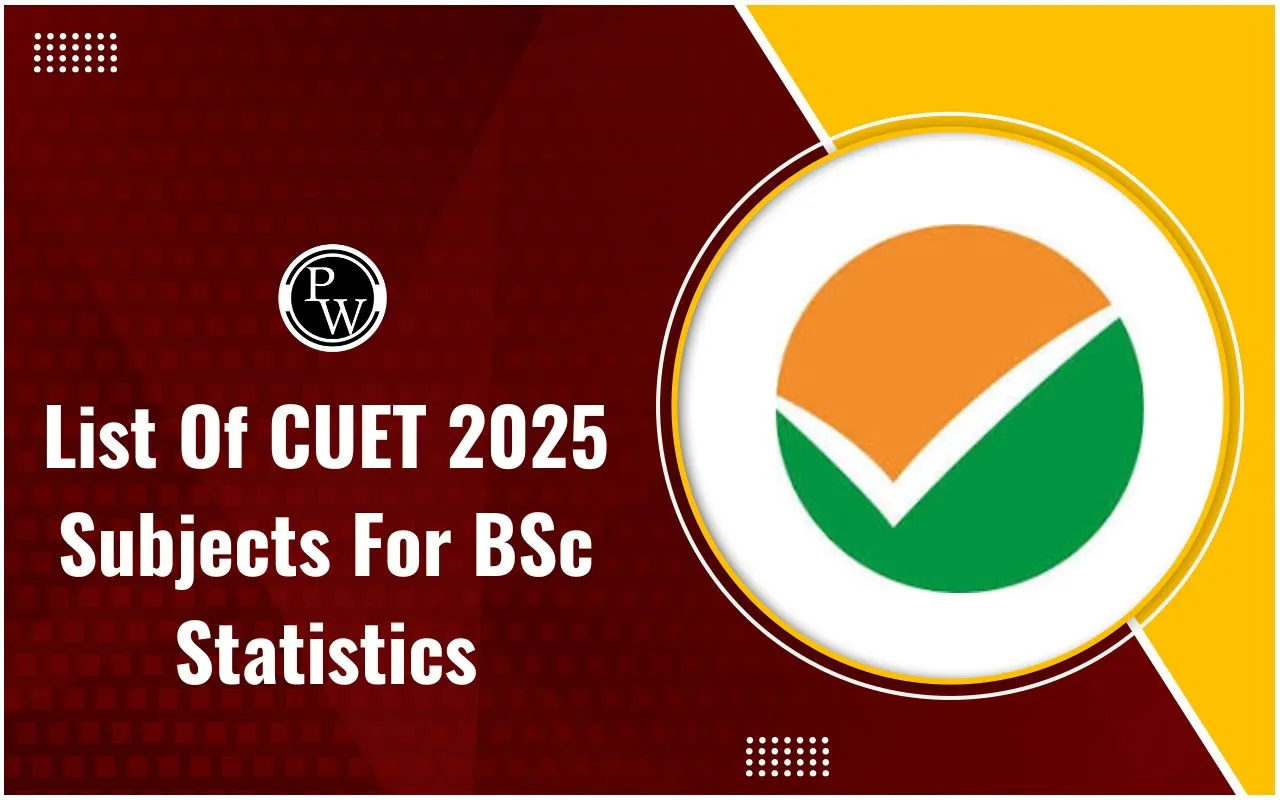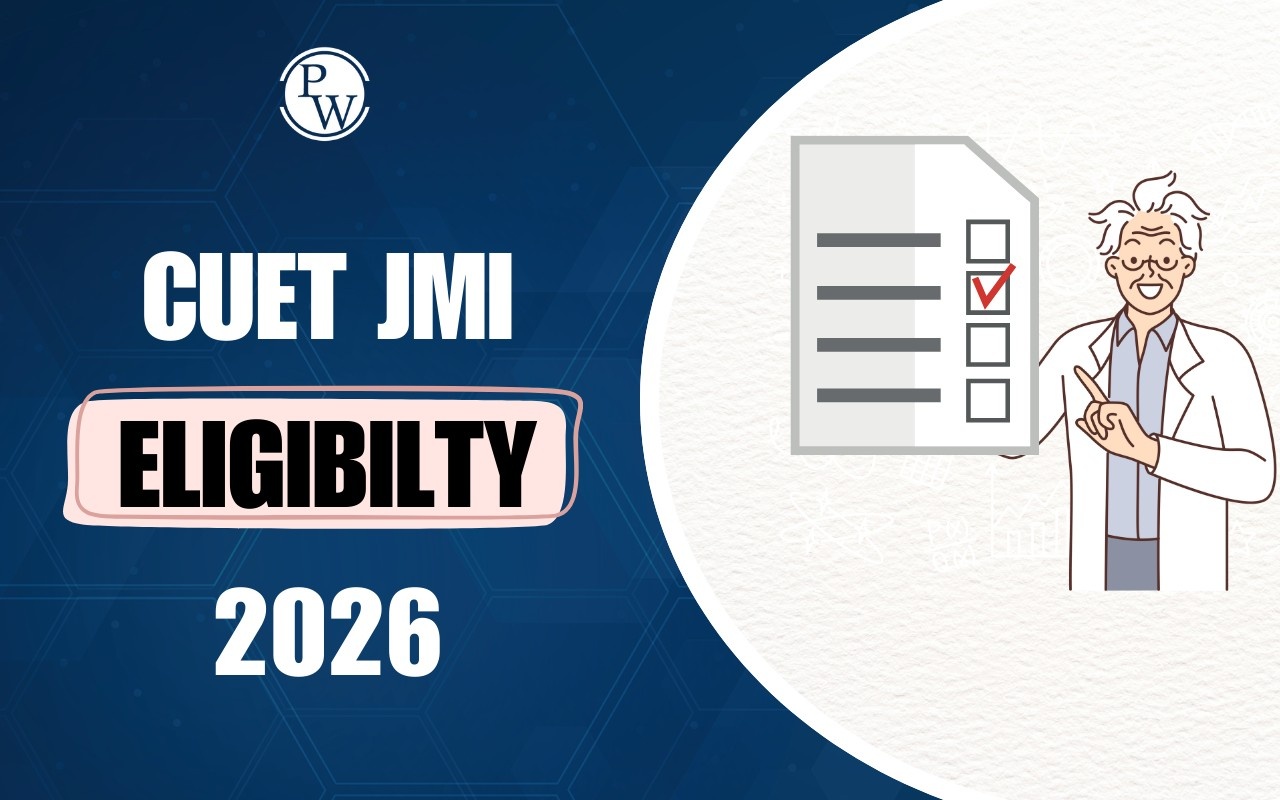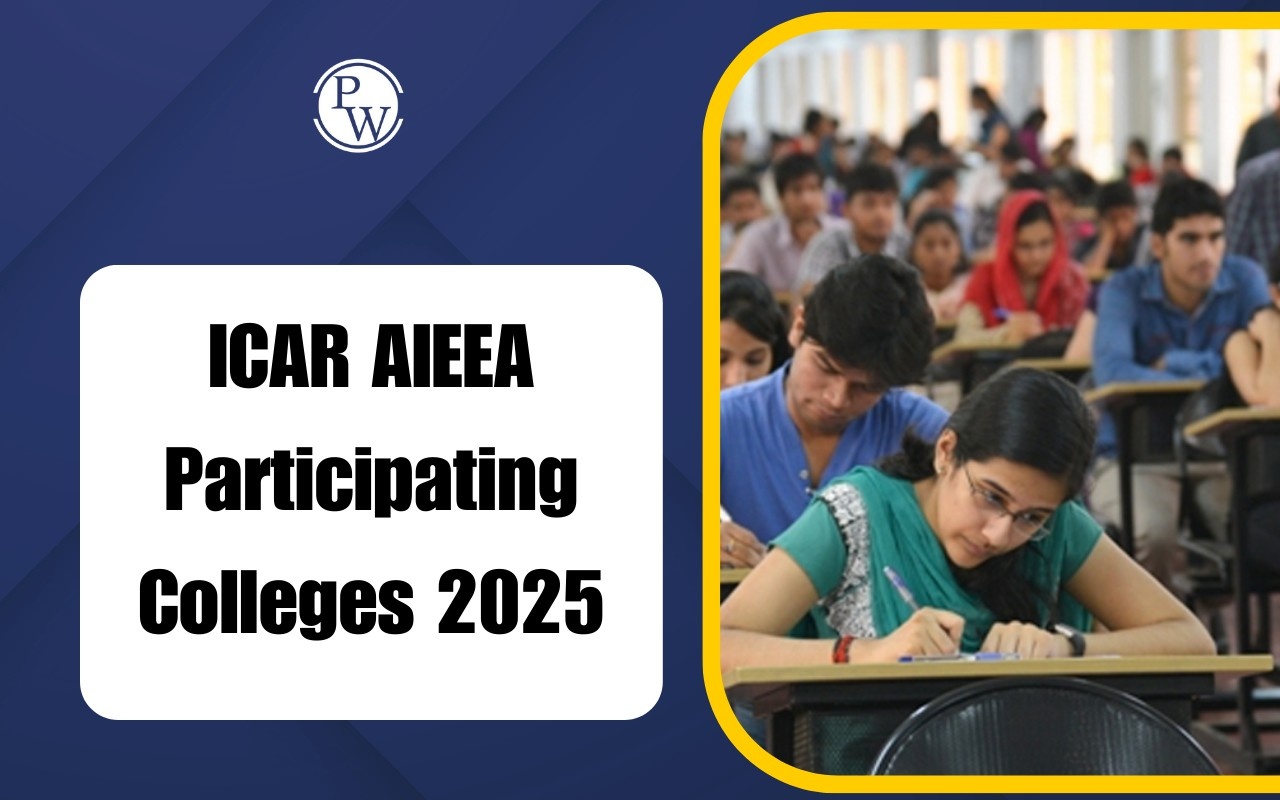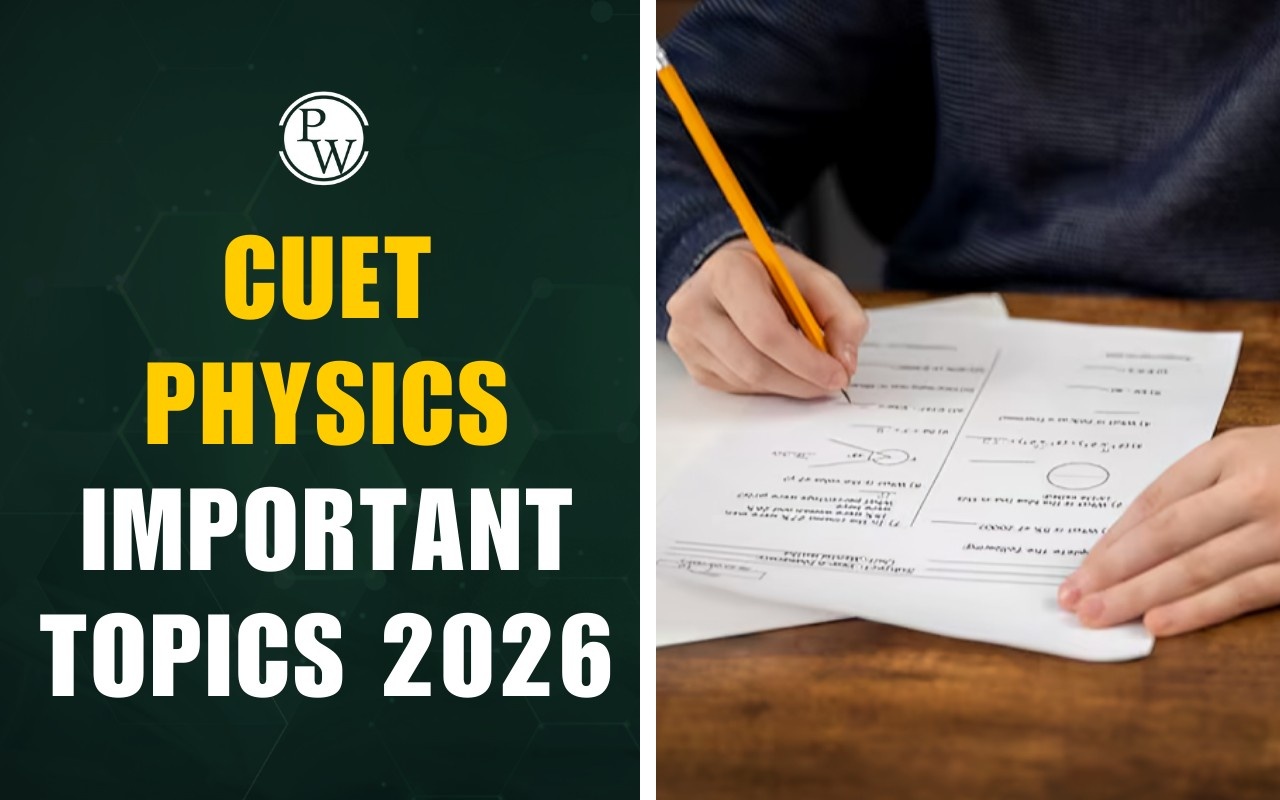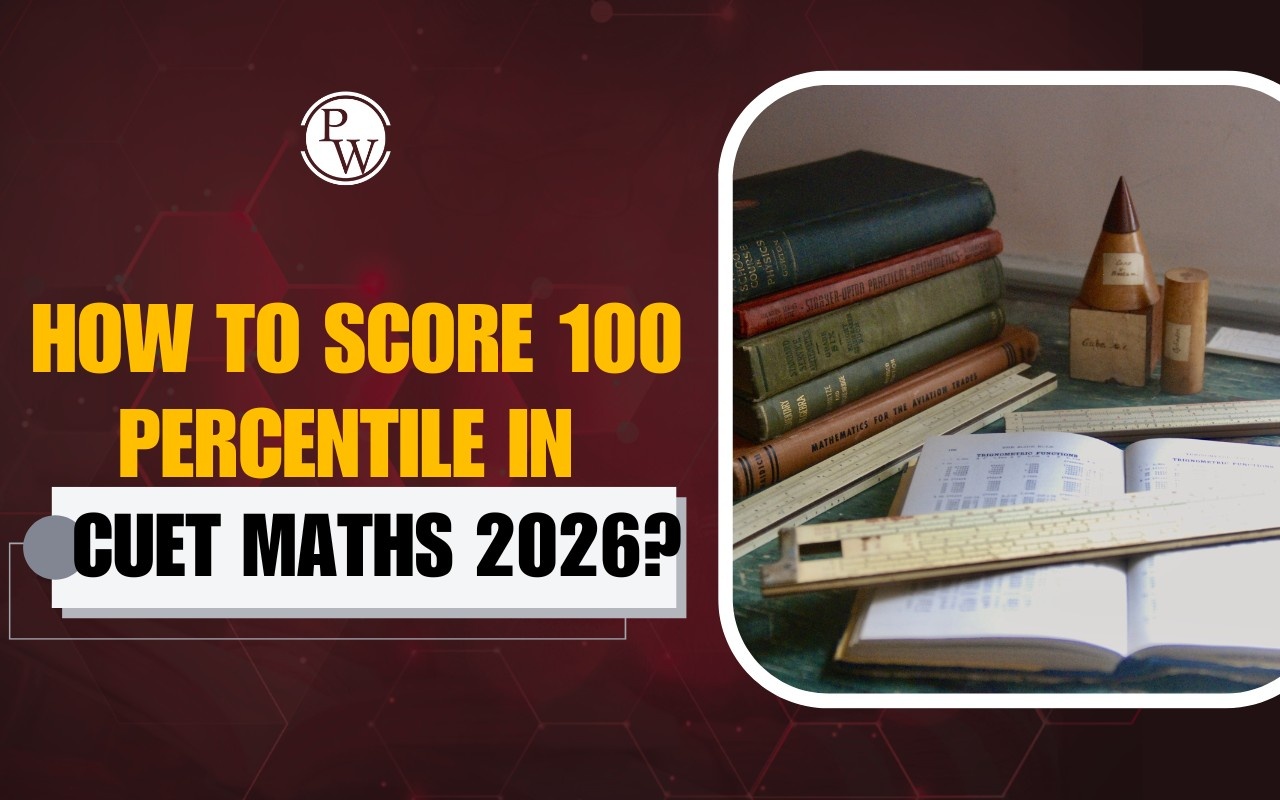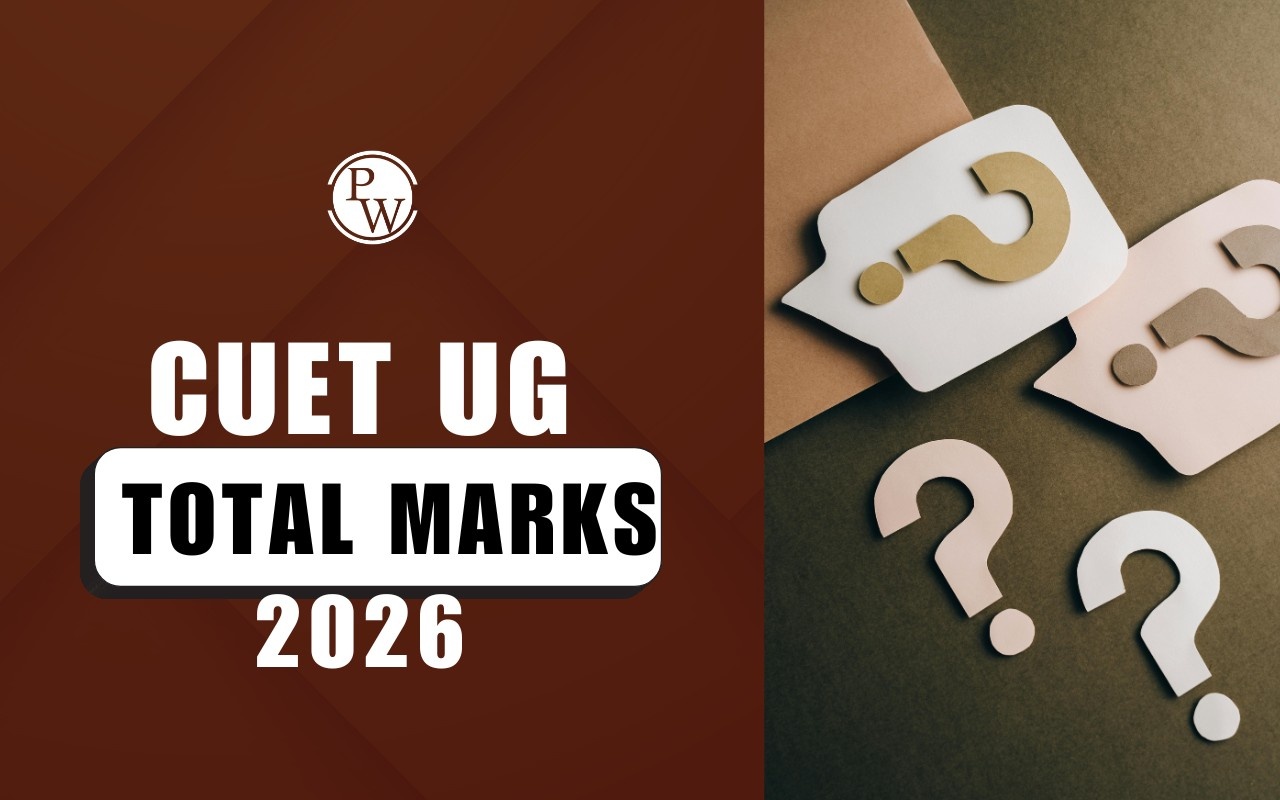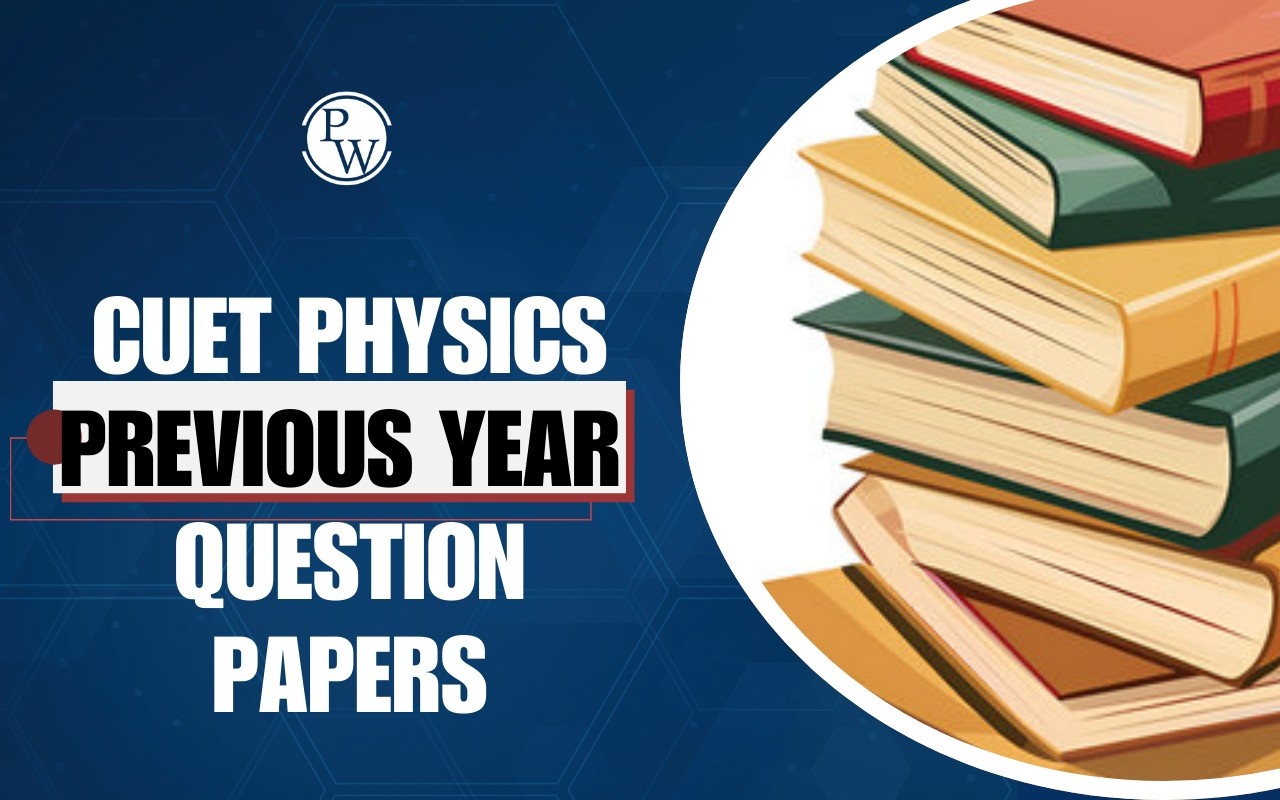
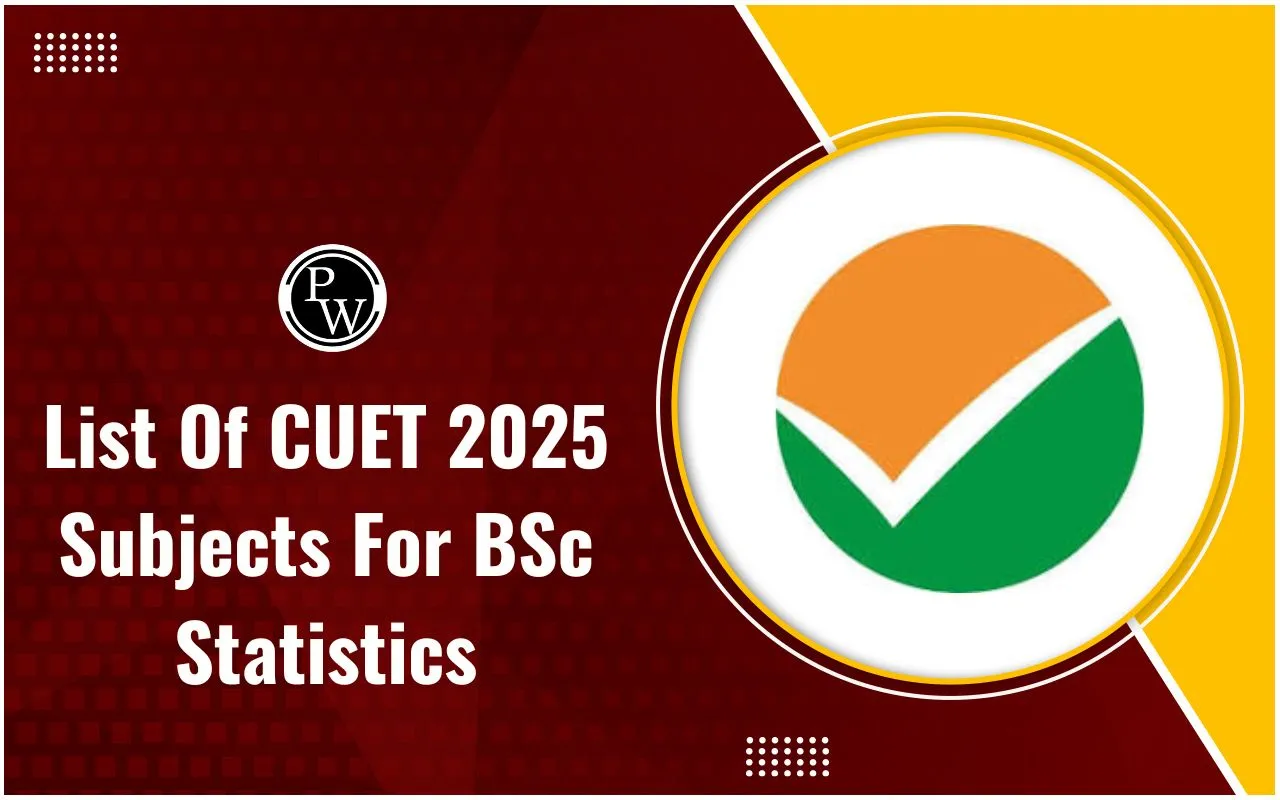
List of CUET 2025 Subjects for BSc Statistics : The Common University Entrance Test (CUET) 2025 is a national-level entrance exam conducted by the National Testing Agency (NTA) for undergraduate admissions to over 250 universities across India, including Delhi University (DU), Banaras Hindu University (BHU), Jamia Millia Islamia (JMI), and others. Students aspiring to pursue a BSc (Hons.) in Statistics must select a specific subject combination to be eligible for admission through CUET UG 2025. This article provides a detailed guide on CUET 2025 subjects for BSc Statistics, including subject combinations, syllabus, exam pattern, and other essential details.
CUET 2025 Subject List for BSc Statistics
BSc (Hons.) Statistics is a three-year undergraduate program that focuses on statistical methods, mathematical principles, and data analysis. Admission to this program through CUET UG 2025 requires students to select specific subjects.
CUET 2025 Subject Combination for BSc Statistics
To be eligible for BSc Statistics, students must select subjects in the CUET UG 2025 exam as follows:
-
One language from List A (Section 1A or 1B)
-
Mathematics/Applied Mathematics (Compulsory from List B1)
-
Two additional subjects, with at least one from List B1
Important: Different universities may have specific subject requirements, so candidates must check the cuet eligibility criteria of their preferred universities before selecting subjects.
List A: Language Subjects (Section 1A & Section 1B)
The language section of CUET UG 2025 is divided into two subcategories:
Section 1A: Indian Languages
These are widely spoken languages used in India as mediums of instruction.
-
Assamese
-
Bengali
-
Gujarati
-
Hindi
-
Kannada
-
Malayalam
-
Marathi
-
Odia
-
Punjabi
-
Tamil
-
Telugu
-
Urdu
-
English
Section 1B: Foreign and Additional Languages
This section includes foreign and regional languages, allowing students to expand their linguistic options.
-
Arabic
-
Bodo
-
Chinese
-
Dogri
-
French
-
German
-
Italian
-
Japanese
-
Kashmiri
-
Konkani
-
Maithili
-
Manipuri
-
Nepali
-
Persian
-
Russian
-
Sanskrit
-
Santhali
-
Sindhi
-
Spanish
-
Tibetan
Exam Pattern for Language Section:
-
Total Questions: 50 (40 to be attempted)
-
Duration: 45 minutes
-
Question Type: Passage-based MCQs (Reading Comprehension, Vocabulary, and Grammar)
Choosing the right language is essential, as proficiency in the selected language may impact admission eligibility and coursework.
List B: Domain-Specific Subjects (Section II)
This section includes core subjects from the high school curriculum. Students applying for BSc Statistics must compulsorily select Mathematics/Applied Mathematics and at least one additional subject from List B1.
List B1: Core Domain Subjects
-
Mathematics/Applied Mathematics (Compulsory)
-
Accountancy
-
Anthropology
-
Biology/Biotechnology/Biochemistry
-
Business Studies
-
Chemistry
-
Computer Science/Informatics Practices
-
Economics/Business Economics
-
Environmental Studies
-
Geography/Geology
-
History
-
Home Science
-
Legal Studies
-
Physics
-
Political Science
-
Psychology
-
Sanskrit
-
Sociology
List B2: Additional Specialized Subjects
These subjects offer additional flexibility for students with unique academic interests.
-
Agriculture
-
Engineering Graphics
-
Entrepreneurship
-
Fine Arts/Visual Arts (Sculpture/Painting/Commercial Arts)
-
Knowledge Tradition and Practices of India
-
Mass Media/Mass Communication
-
Performing Arts
-
Physical Education/NCC/Yoga
-
Teaching Aptitude
General Test (Section III) – Not Required for BSc Statistics
The General Test evaluates general knowledge and reasoning abilities but is not mandatory for BSc Statistics. However, some universities may require it for admission.
General Test Topics:
-
General Knowledge & Current Affairs
-
General Mental Ability
-
Numerical Ability (Basic Mathematics up to Class 8)
-
Quantitative Reasoning (Arithmetic, Algebra, Geometry, Mensuration, and Statistics)
-
Logical & Analytical Reasoning
Note: Check university-specific requirements before deciding whether to take the General Test.
CUET UG 2025 Syllabus for BSc Statistics
Students aspiring for BSc Statistics admission through CUET UG 2025 must select Mathematics/Applied Mathematics as one of their subjects. The syllabus is divided into three sections: Section A (Core Mathematics), Section B1 (Advanced Mathematics), and Section B2 (Applied Mathematics).
Section A (Core Mathematics) – Compulsory
Section A (Core Mathematics) focuses on fundamental mathematical principles essential for understanding statistical methods. This section includes topics such as algebra, calculus, probability distributions, and linear programming.
| Section A (Core Mathematics) – Compulsory | |
|
Units |
Topics Covered |
|
Algebra |
Matrices and types of matrices, Equality of matrices, Transpose of a matrix, Symmetric and Skew-symmetric matrices, Determinants, Inverse of a matrix |
|
Calculus |
Higher-order derivatives, Tangents and Normals, Increasing and Decreasing Functions, Maxima and Minima |
|
Integration and Its Applications |
Indefinite integrals of simple functions, Evaluation of indefinite integrals, Definite integrals, Application of integration as the area under the curve |
|
Differential Equations |
Order and degree of differential equations, Formulating and solving differential equations with variable separable method |
|
Probability Distributions |
Random variables and their probability distribution, Expected value, Variance and Standard Deviation, Binomial Distribution |
|
Linear Programming |
Mathematical formulation of Linear Programming Problem, Graphical method for problems in two variables, Feasible and infeasible regions, Optimal feasible solution |
Section B1 (Advanced Mathematics)
Section B1 (Advanced Mathematics) builds on core mathematical concepts and delves into more complex topics. It includes advanced calculus, probability, vectors, and three-dimensional geometry, essential for higher-level statistical applications.
|
Units |
Topics Covered |
|
Relations and Functions |
Relations and Functions, Inverse Trigonometric Functions |
|
Algebra |
Matrices, Determinants |
|
Calculus |
Continuity and Differentiability, Applications of Derivatives, Integrals, Applications of Integrals, Differential Equations |
|
Vectors and Three-Dimensional Geometry |
Vectors, Three-dimensional Geometry |
|
Linear Programming |
Introduction, Constraints, Objective functions, Optimization, Types of Linear Programming Problems |
|
Probability |
Multiplication theorem on probability, Conditional probability, Independent events, Total probability theorem, Bayes’ theorem |
Section B2 (Applied Mathematics)
Section B2 (Applied Mathematics) focuses on mathematical applications, including numerical methods, financial mathematics, and inferential statistics.
|
Units |
Topics Covered |
|
Numbers, Quantification, and Numerical Applications |
Modulo Arithmetic, Congruence Modulo, Allegation and Mixture, Numerical Problems (Boats & Streams, Pipes & Cisterns, Races & Games, Partnership), Numerical Inequalities |
|
Algebra |
Matrices and types of matrices, Equality of matrices, Transpose of a matrix, Symmetric and Skew-symmetric matrices |
|
Calculus |
Higher Order Derivatives, Marginal Cost and Marginal Revenue using Derivatives, Maxima and Minima |
|
Probability Distributions |
Probability Distribution, Mathematical Expectation, Variance |
|
Index Numbers and Time-Based Data |
Index Numbers, Construction of Index Numbers, Test of Adequacy, Time Series, Components of Time Series, Time Series Analysis for Univariate Data |
|
Inferential Statistics |
Population and Sample, Parameter and Statistics, Statistical Inferences |
|
Financial Mathematics |
Perpetuity, Sinking Funds, Valuation of Bonds, Calculation of EMI, Linear method of Depreciation |
|
Linear Programming |
Mathematical formulation of Linear Programming Problems, Different types of Linear Programming Problems, Graphical Method for problems in two Variables, Feasible and Infeasible Regions, Feasible and Infeasible Solutions, Optimal Feasible Solution |
CUET UG 2025 Exam Pattern For BSc Statistics
The CUET UG 2025 exam pattern for BSc Statistics requires students to choose Mathematics/Applied Mathematics as one of the 29 domain subjects. The exam consists of three sections (A, B1, and B2), with a structured question format and a negative marking scheme.
|
Exam Aspect |
Details |
|
Exam Conducting Body |
National Testing Agency (NTA) |
|
Examination Name |
Common University Entrance Test (CUET UG) |
|
Medium of Examination |
13 Languages (e.g., English, Hindi) |
|
Examination Mode |
Computer-Based Test (CBT) |
|
Time Duration for Exam |
60 minutes |
|
Total Number of Questions |
Section A: 15 questions (All compulsory) Section B1: 35 questions (Attempt any 25) Section B2: 35 questions (Attempt any 25) |
|
Total Questions to be Attempted |
65 questions |
|
Marking Scheme |
+5 for each correct answer -1 for each incorrect answer |
|
Expected Exam Date |
Third week of May 2025 (Tentative) |
Key Points for BSc Statistics Aspirants
-
Mathematics/Applied Mathematics is a mandatory subject for CUET UG 2025 for BSc Statistics admissions.
-
The exam follows a Computer-Based Test (CBT) mode with a multiple-choice question (MCQ) format.
-
Section A has 15 compulsory questions, while Sections B1 and B2 require students to attempt 25 out of 35 questions.
-
Negative marking is applicable (-1 for incorrect answers), so students should attempt questions carefully.
-
The exam will be conducted in multiple regional languages, allowing flexibility for students from different backgrounds.
List Of CUET 2025 Subjects For BSc Statistics FAQs
Q.1 : Who is eligible for CUET 2025 BSc Statistics?
Q.2 : Can I choose subjects from List B2 for BSc Statistics?
Q.3 : Is the General Test required for BSc Statistics?
Q.4 . Does BHU have different cutoffs for different courses?
Q.5 : What are the passing marks for CUET to get admission to BHU?

